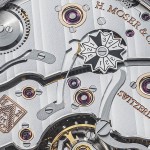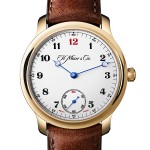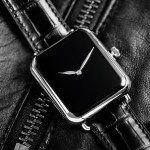Interview: Edouard Meylan on Building H. Moser & Cie. for the Long Term
Including limiting the production of bestsellers.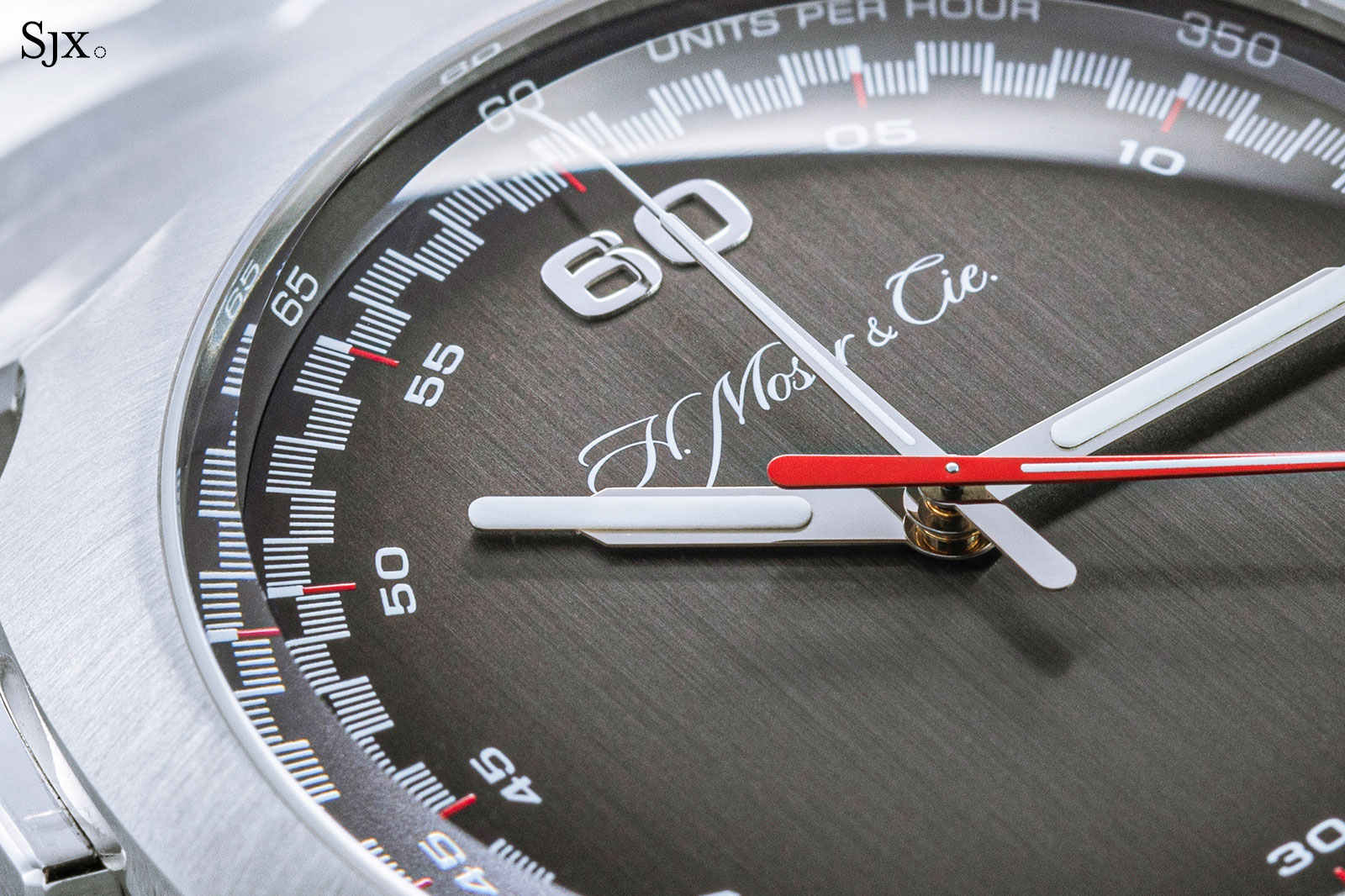
Edouard Meylan took the helm of H. Moser & Cie. just over a decade ago, after the brand was acquired by his family. Together with his brother Bertrand, who leads the brand’s distribution, the chief executive of Moser has successfully turned around a brand that was in dire straits when the Meylans took charge. Industry talk at the time was that the brand’s founder, a dental implant billionaire, had sunk some CHF100 million into Moser.
Today Moser is an independent brand that’s widely regarded to be on sound footing. Despite the slowdown that is gradually taking hold in the luxury-watch industry, Moser will in all likelihood enjoy a longevity, unlike many of its peers in the independent watchmaking space.
Notably, neither Edouard Meylan nor his brother are watchmakers, instead they are entrepreneurs in the mould of Maximilian Büsser and Richard Mille. Mr Meylan’s business sensibilities are apparent, as we discover in the interview below. Amongst other things, he explains why the Streamliner is capped at a third of overall revenue, despite being a runaway bestseller. He also discusses the brand progressive vertical integration, as well as the possibility of expanding his family’s holdings beyond the duo of H. Moser & Cie. and Hautlence.
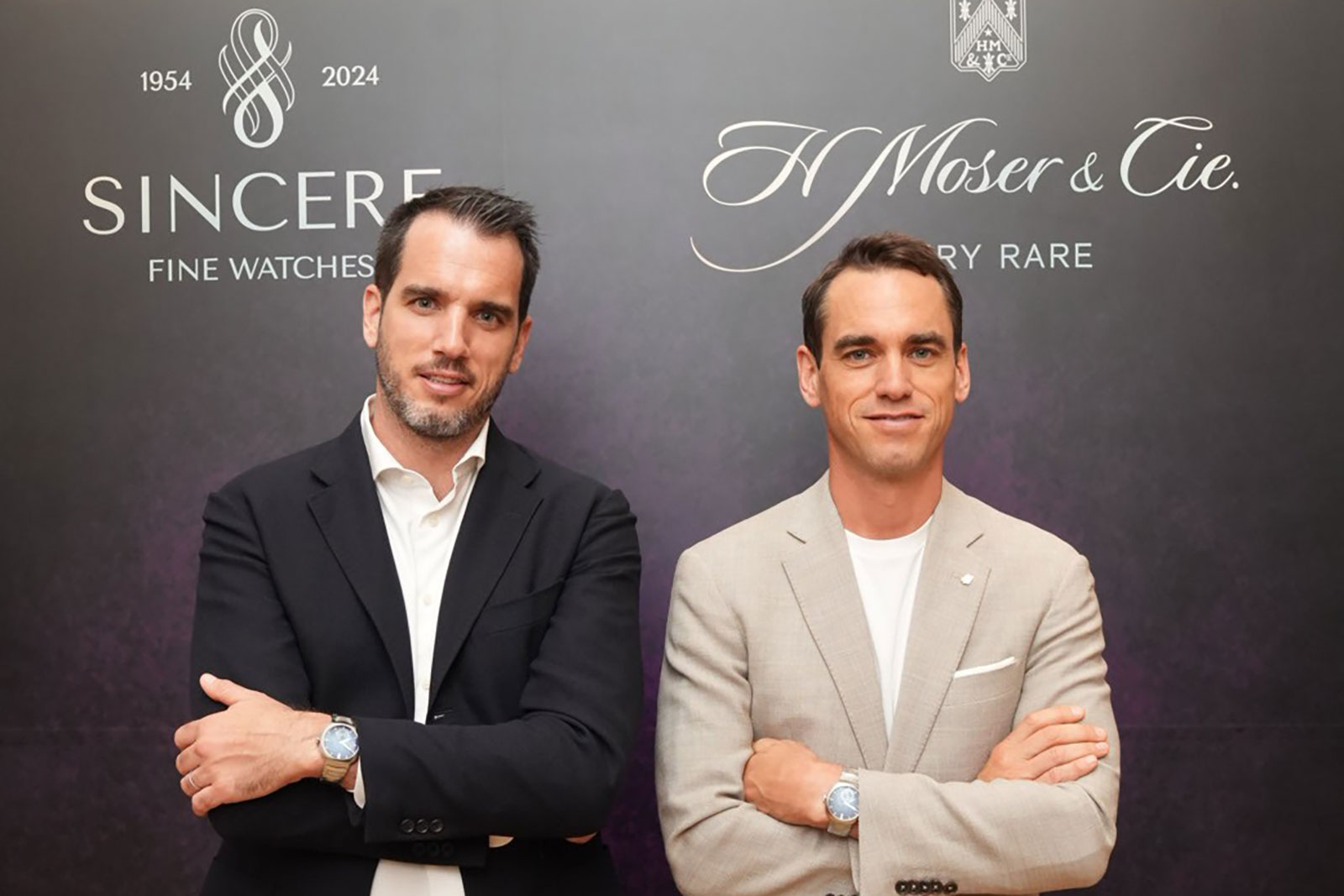
Bertrand Meylan (left), and Edouard Meylan
The interview was edited for clarity and length.
SJX: Moser recently got into Formula 1 [with the Alpine F1 Team sponsorship], and I understand you just returned from a race.
Edouard Meylan (EM): We were in China, Miami, Monaco, and I was in Silverstone this weekend. It’s a great experience. The customers love it. F1 brings a lot of value and the first thing you’ll see change is perception [of our brand].
SJX: Most of the other watch brands involved in Formula One are much, much bigger. You’re probably the only independent brand sponsoring a Formula 1 team?
EM: Most of the other teams, Ferrari, McLaren, are also bigger [than Alpine F1 Team]. They are the underdogs, and we are the underdogs of watchmaking, so it’s a good match. They came to us with a wide spectrum for partnership, so it’s not only Formula 1, but also [World Endurance Championship] and road cars.
SJX: How did they come to you?
EM: The CEO of Renault is a big independent fan. What’s funny is that our father [Georges-Henri Meylan] is a big Alpine fan; he’s a collector who drives old Alpines.
SJX: Will be a Formula 1 watch that is designed from scratch in the future?
EM: That’s the main objective. This weekend we had a brainstorming session, we sat down, we started asking for ideas and started to sketch. We need to go fast if we want something for next year or the year after.
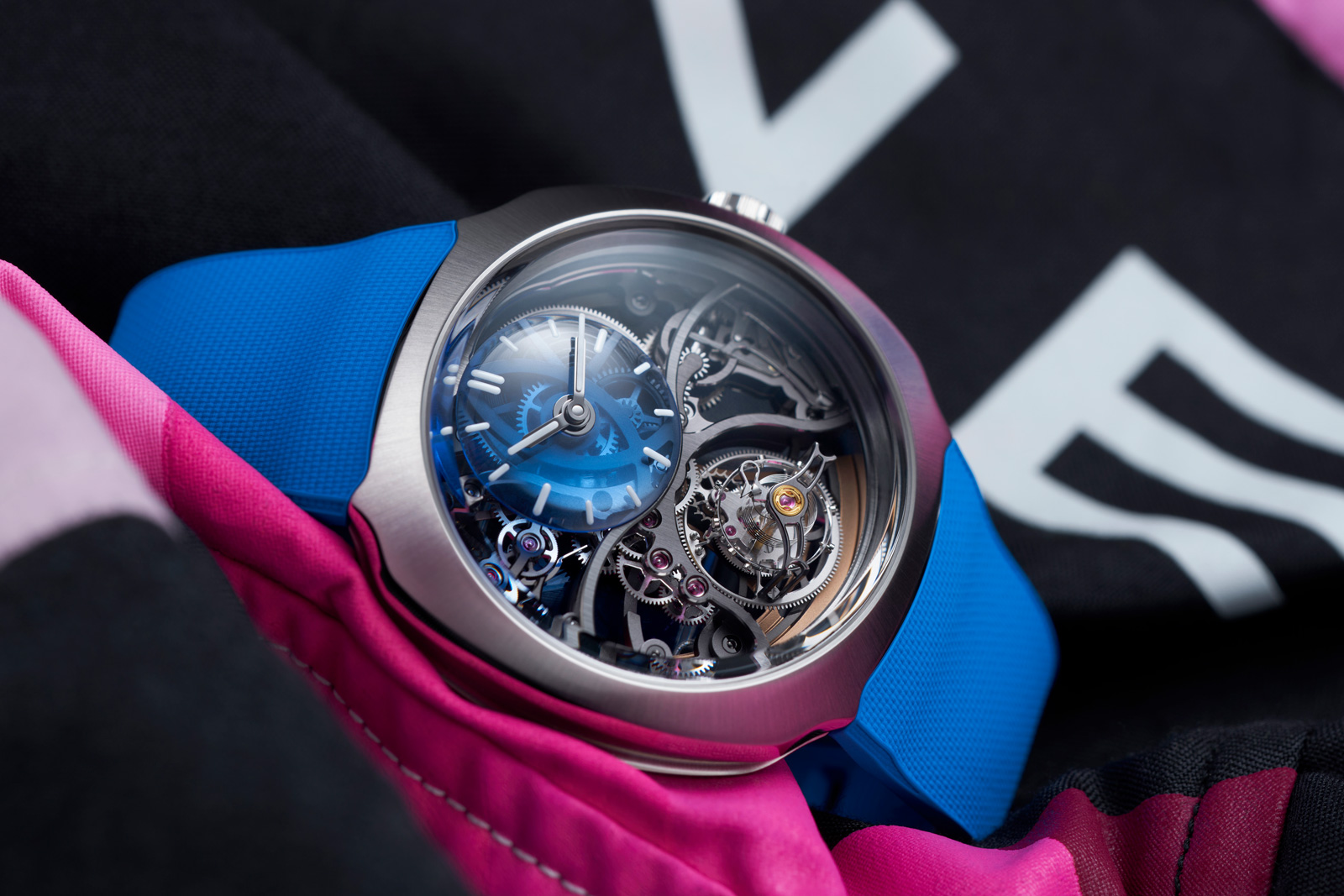
The first watch born of the F1 sponsorship, the Streamliner Cylindrical Tourbillon Skeleton “Alpine”. Image – H. Moser & Cie.
SJX: Speaking of editions, you are in Singapore to launch the SHH edition. Tell us about it.
EM: We’ve been working with Sincere for 10 years now. And this year is a very special year for them because it’s their 70th anniversary. We’ve been designing this watch for 18 months now.
When we started working on it, we both absolutely wanted a perpetual calendar, but we wanted to make it with a twist. Having this sporty watch with a purple enamel-hammered dial, a perpetual calendar, and in red gold – a real mix between a sporty but also elegant. It’s a good summary of what Moser stands for today.
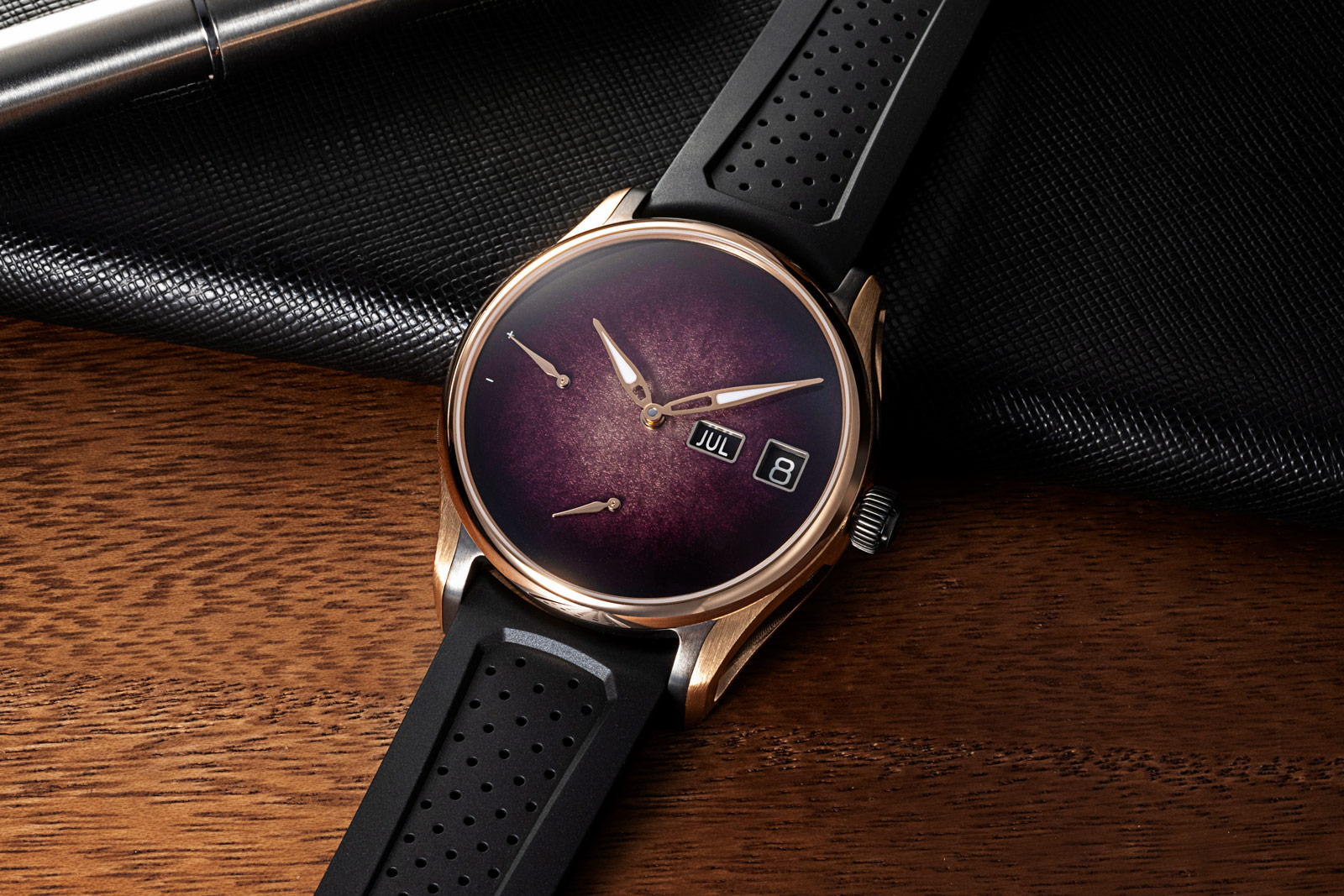
The Pioneer Perpetual Calendar Concept MD Purple Enamel Sincere Platinum Jubilee. Image – Sincere Fine Watches
SJX: This perpetual calendar has been like your signature movement for almost 20 years now. How has the movement evolved over that time?
EM: A lot, but most people can’t tell the difference [as the upgrades are internal]. There’s probably a hundred parts that have been changed to make it more reliable and optimise assembly.
SJX: Even for me it still looks the same from the back.
EM: The centre-second perpetual calendar is different in terms of the construction and bridges but the difference here is hard to tell though the dimensions are a little different.
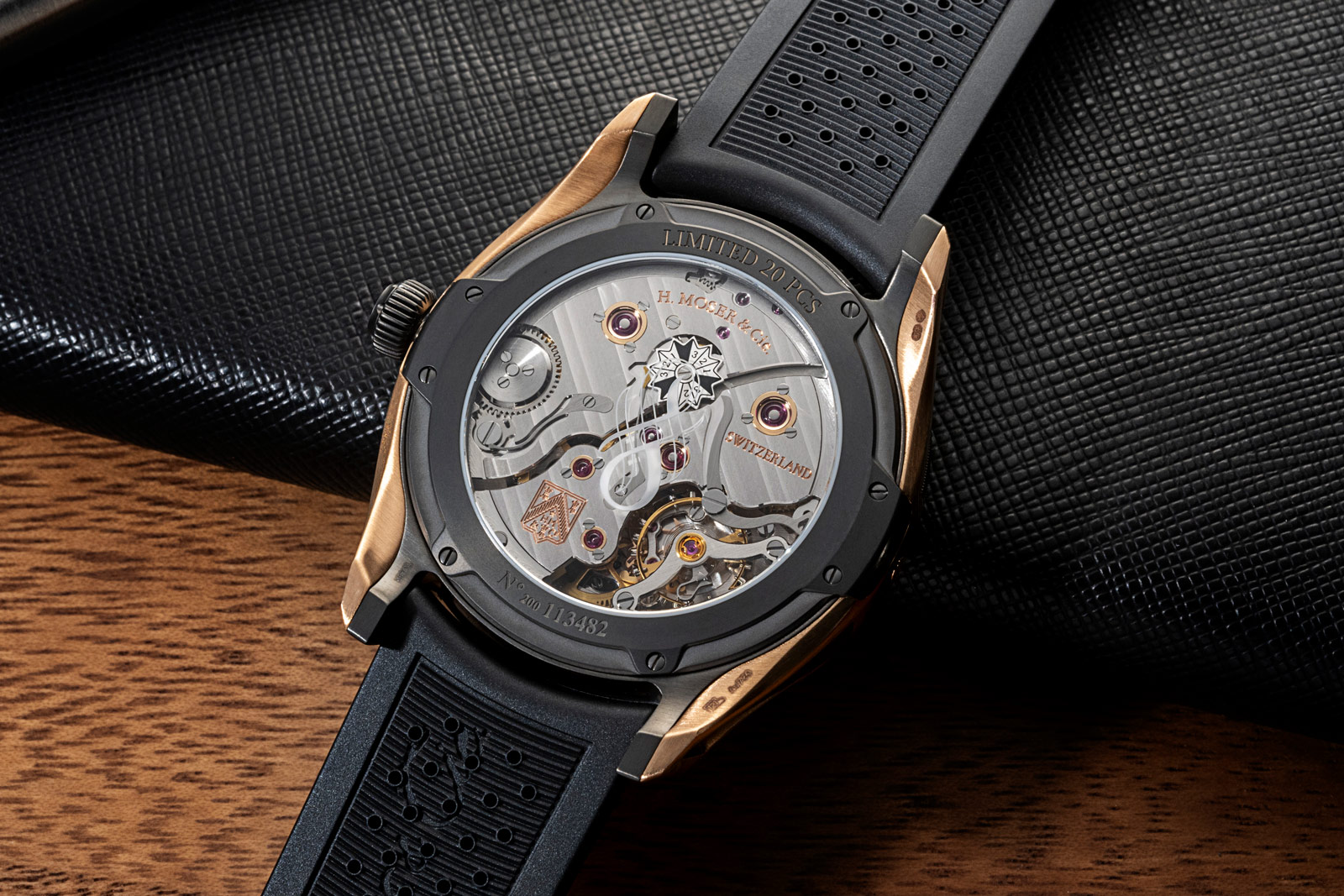
The classic Moser HMC 808 perpetual calendar movement. Image – Sincere Fine Watches
SJX: Is a redesign of the aesthetics that something that you are going to apply to the original perpetual movement?
Bertrand Meylan (BM): Good question. Eventually, maybe. The objective was to keep [the original] more traditional in terms of finishing, with [striped] bridges and less skeletonisation. It’s like what you would see in a pocket watch from the early 20th century, because that’s the original concept and we wanted to keep that. But for the Streamliner and other models that are more modern we wanted to bring a contemporary touch.
SJX: You’re saying Moser now has two different movement aesthetics, the modern and the traditional.
BM: That is correct. Whether we’re going to keep the traditional one is a question. For now, yes, especially in watches like this.
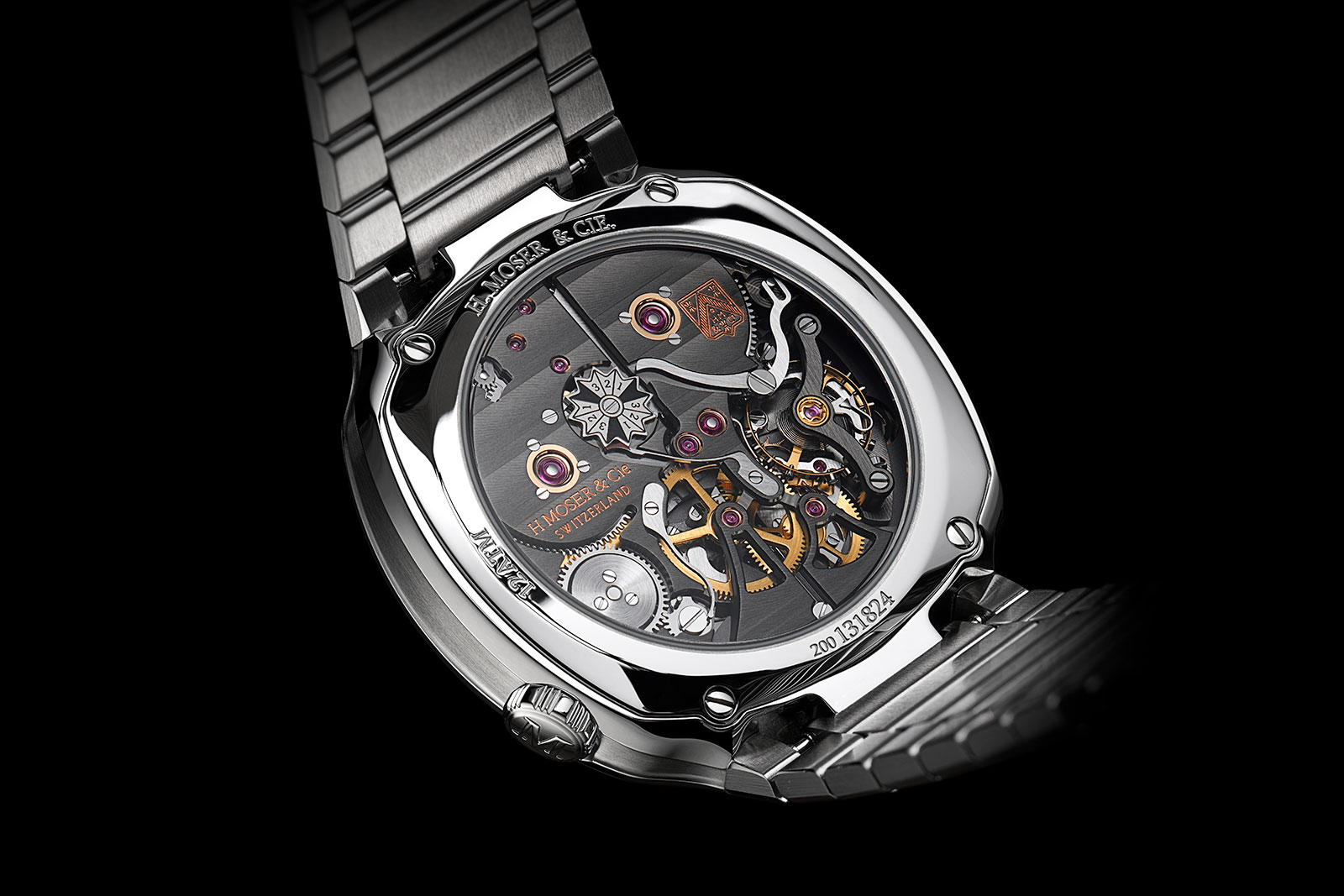
The modern take on the perpetual calendar movement, the HMC 812. Image – H. Moser & Cie.
SJX: Talking about movements, now you own Precision Engineering and Agenhor. How is that coming along?
EM: When we acquired Moser, it came with Precision Engineering, and we were making most of our movements already. We had some help from outside, like Andreas Strehler who were helping us with ideas, but the construction, development was done in-house.
We went to Agenhor when we launched the Streamliner Chronograph, because we felt the Agenhor movement is probably the best modern chronograph on the market. We had a great success with [the Streamliner Chronograph], which really helped bring that movement to the fore. There were other brands using it before, but we really brought it to everyone’s attention.
Now we are working on evolution of the chronograph movement, and Agenhor can do a lot of things that we can’t internally.
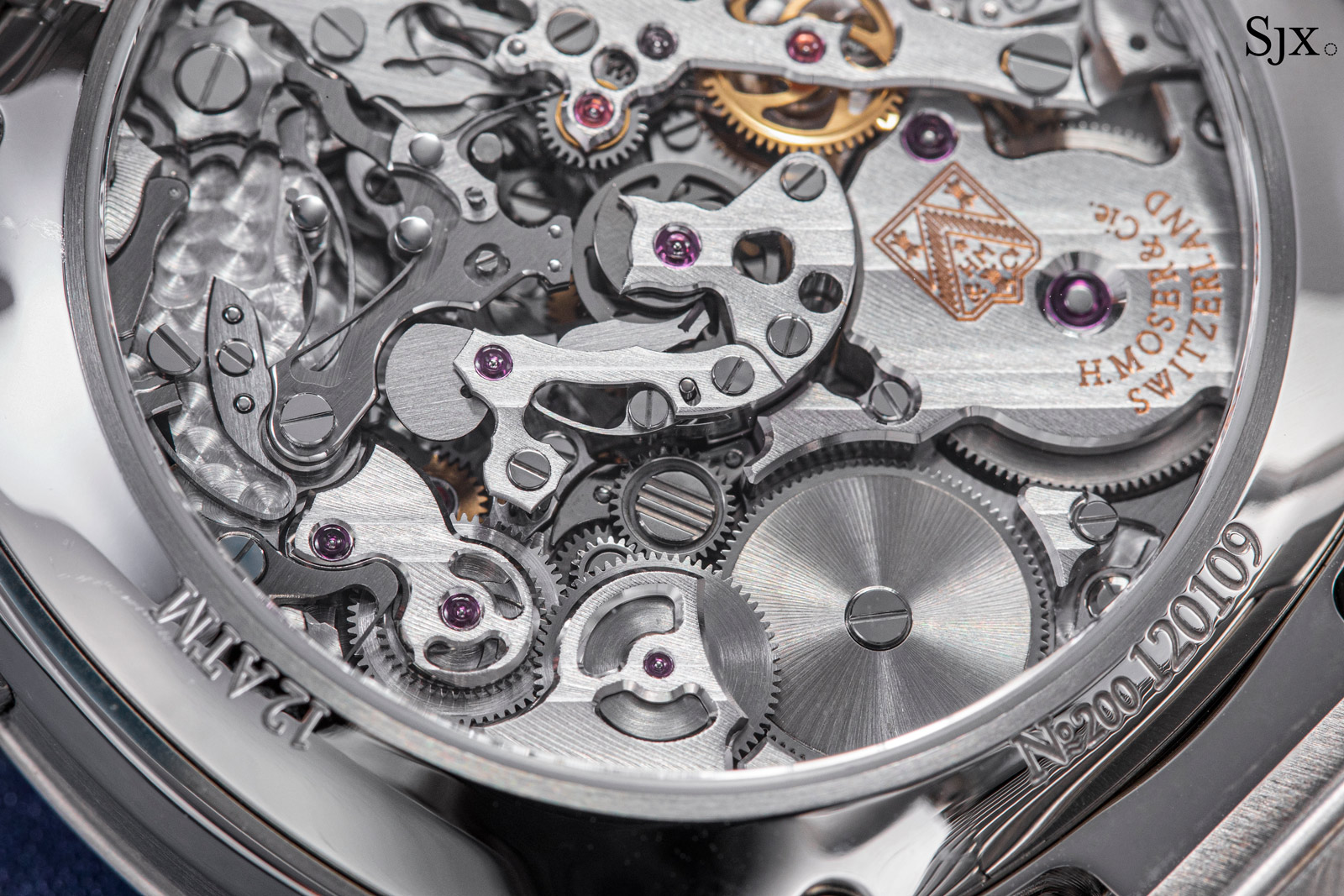
The HMC 902 developed by Agenhor, inside the Streamliner Chronograph
But we need to manage [key supplier] risk, so [the investment in Agenhor] is very strategic. We invested to make sure that they are financially stable. We just took a minority stake. Agenhor is still a family business and we want them to stay independent.
This is part of the overall strategy. We want to secure the supply chain and further vertical integrate. It’s a step-by-step process.
Now we are also looking at the habillage [encompassing dials, cases, bracelets, and crowns]. We have bought our own machines but put them in our bracelet supplier. So the bracelets for the Streamliner are made by our machines, but not within our company. We’re looking into dials also. The anglage is now done externally, but we are training people to do it internally.
At the same time, we have to be careful not to do everything. Because suddenly your costs can go very high very quickly. We need to do the things that make the difference. We need to master them, but also need to understand the risks.
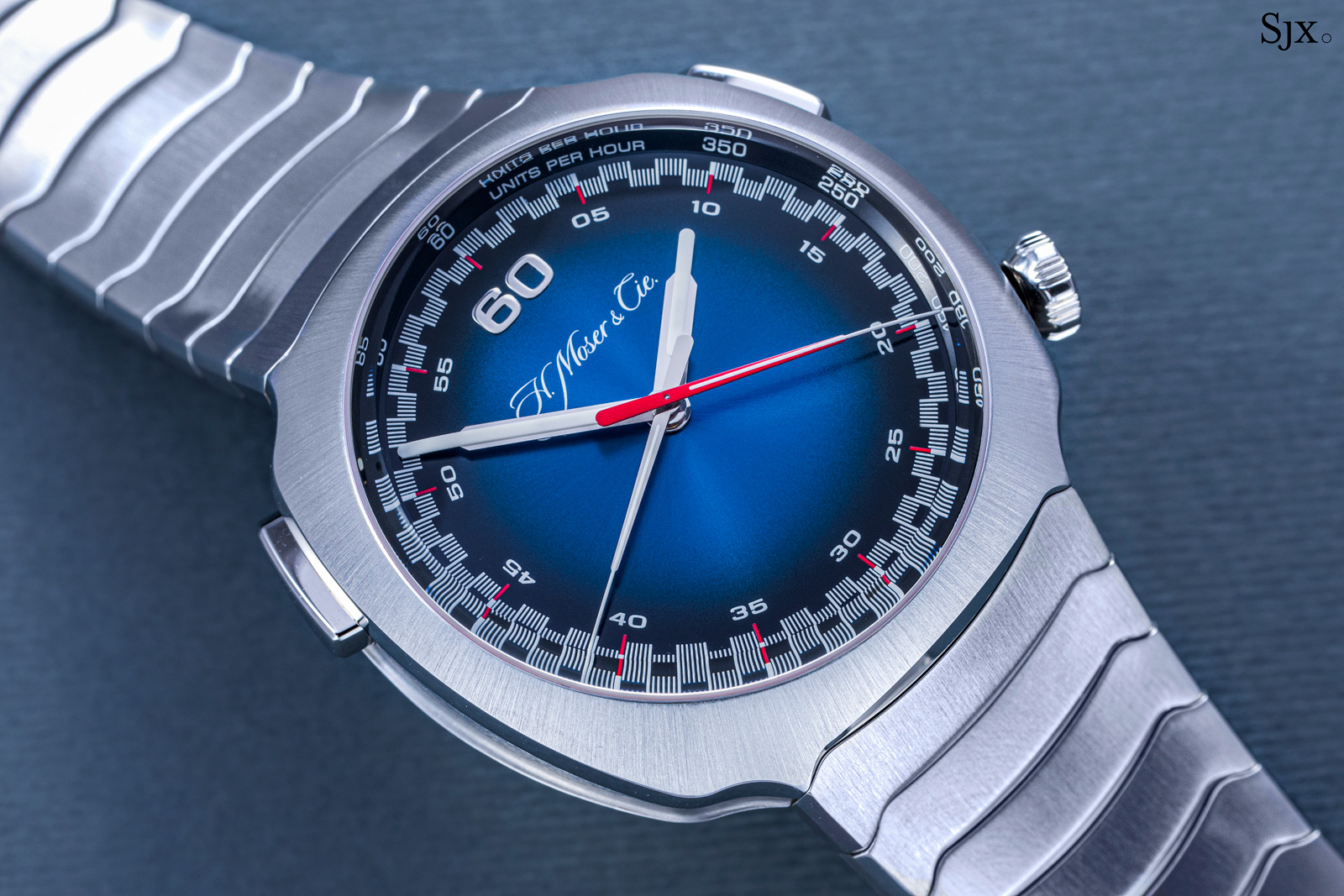
The Streamliner Chronograph
SJX: When you do all the expansion, will you be growing your current factory or going somewhere else?
EM: We’re running out of space and we’re looking at a new factory for 2027 that’s double the size. In the same village [of Neuhausen] and a very nice location.
SJX: You mentioned dials. They are key to the Moser design philosophy. Are there any specific kind of dials that you want to do in-house, like enamel for instance?
EM: Not yet [for enamel], but I have undergone training so I can learn and understand what it takes, to understand the material, processes, complexity, investment. Now we will slowly integrate [enamelling into our factory].
SJX: You should make a limited edition with dials made by you. Ten watches made by the CEO.
EM: I have some pictures of the dials [that I made]. [The dials I made] were not very flat, but it’s a lot of work. [And another dial,] I burnt it. One or two seconds too long in the oven. [Laughs]
It was a fun experience. I might want to give our customers the chance to experience it too. It can even be at two-hour experience where you prepare your pigments, paint the dial, do it once or twice and see how it evolves and understand how complex it is to get the consistent result twice. Our head of development made a bright red dial but he couldn’t do it the same again.
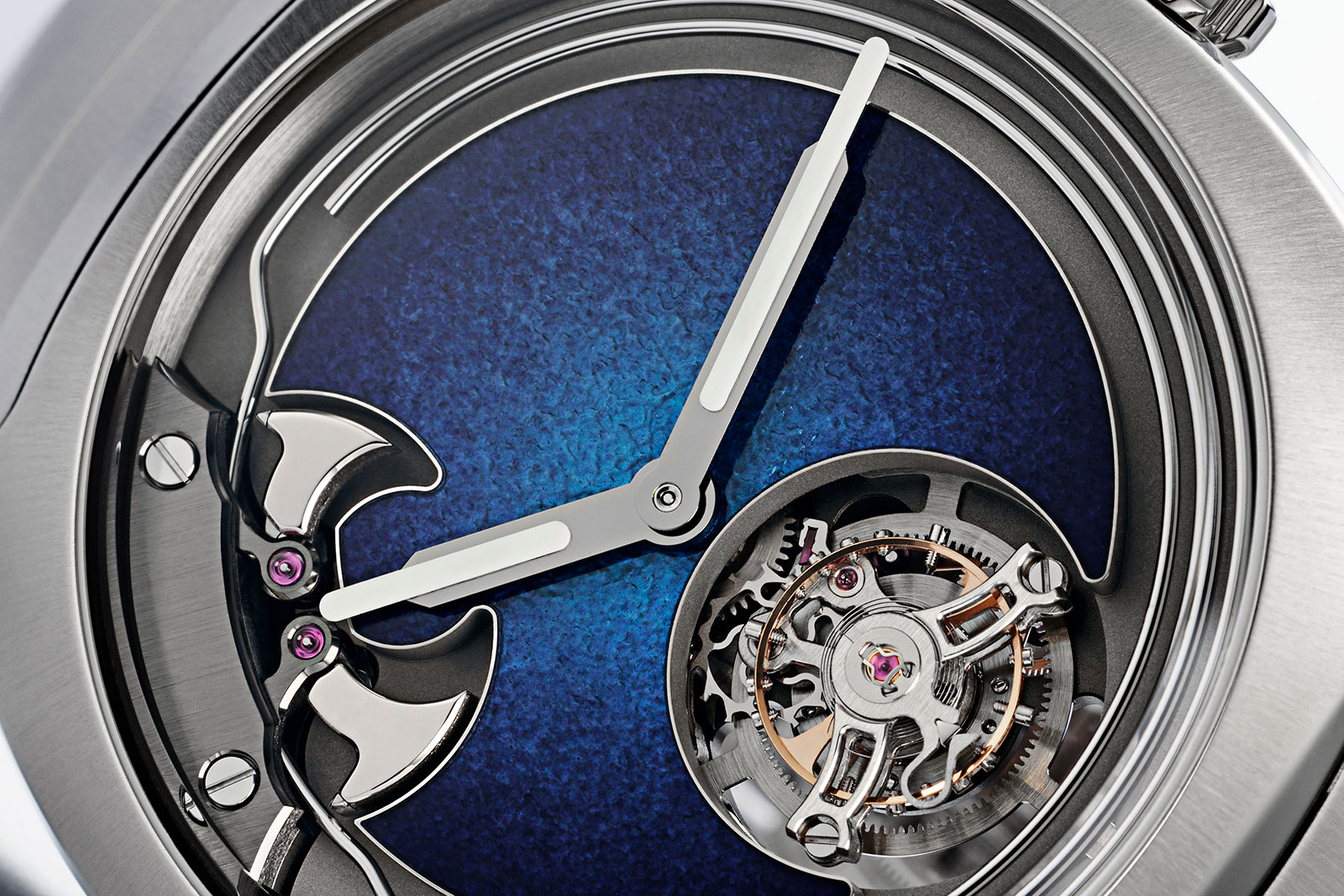
The Streamliner Concept Minute Repeater Tourbillon with an enamel dial. Image – H. Moser & Cie.
SJX: Where did you learn to do enamel?
EM: There’s a master enameller in a village that is very close by, a lady that makes jewellery. The big difference with jewellery is you don’t need the same precision as for dials, but I wanted you to understand the techniques. The work she does also includes [plique-à-jour enamel] where there’s nothing behind it.
SJX: Earlier you mentioned the Streamliner, which is now your bestselling collection. What’s the direction of Moser now that you have the four collections?
EM: We have the four pillars: Endeavor, Heritage, Pioneer and Streamliner. The strength of a brand like Moser is that we have different offerings. It’s important to keep a balance between all four collections, as we know trends can evolve very quickly from one to another.
So we try to maintain the balance in both sales and production every year. We keep a good balance of 30% each for the Pioneer, Endeavour and Streamliner and then 10% for the Heritage. Our objective is to maintain this.
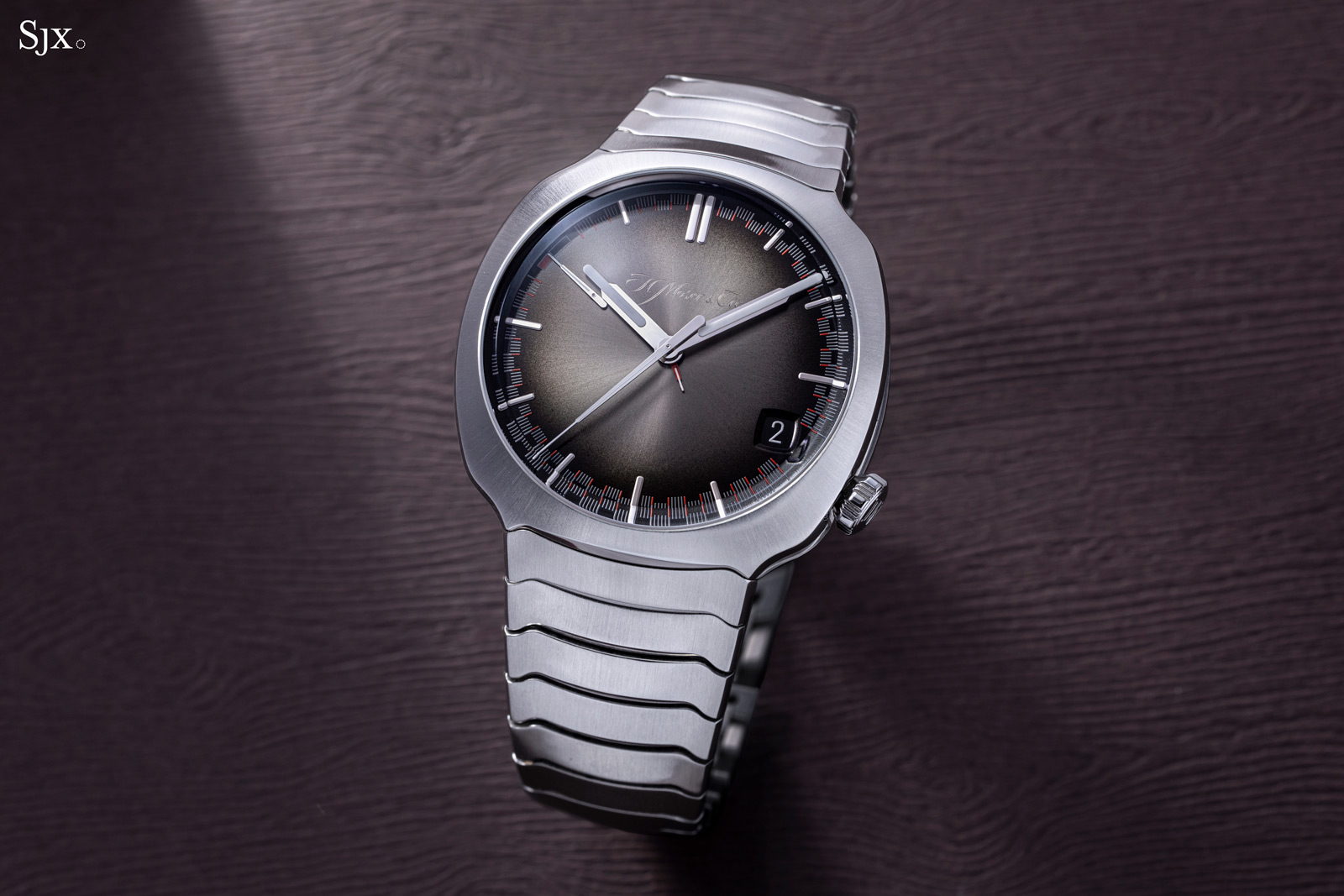
The Streamliner Perpetual Calendar
SJX: You have avoided the pitfall of the integrated-bracelet sports watch becoming the majority of business.
EM: Of course, Streamliner is a little bit more this year, maybe 34% [of sales], but it’s very important for us to avoid [the collection becoming dominant].
Now it’s also important strategically to think about the entry level. How do we keep an entry-level model? Prices are going up. There’s inflation and the Swiss franc is very strong. The hard work right now is to have interesting products in the entry- level segment for younger collectors.
SJX: What is your ideal entry-level price?
EM: Around CHF13,000. We raised it because of inflation but now we want to keep it there.
A lot of brands have the tendency to creep up over time. Our average prices can go up, which means we continue to have grand complications, but the entry-level has to remain as low as possible.
SJX: Why does the entry-level matter to you?
EM: Moser has always been very interesting as an entry into independent watchmaking. There is no other brand that can offer in-house movements and versatile products that are water resistant, like the Pioneer or Heritage, at this price point.
It’s important for us to continue to do that to capture the young collectors. And now we’re also trying to bring simple complications to market priced below CHF20,000.
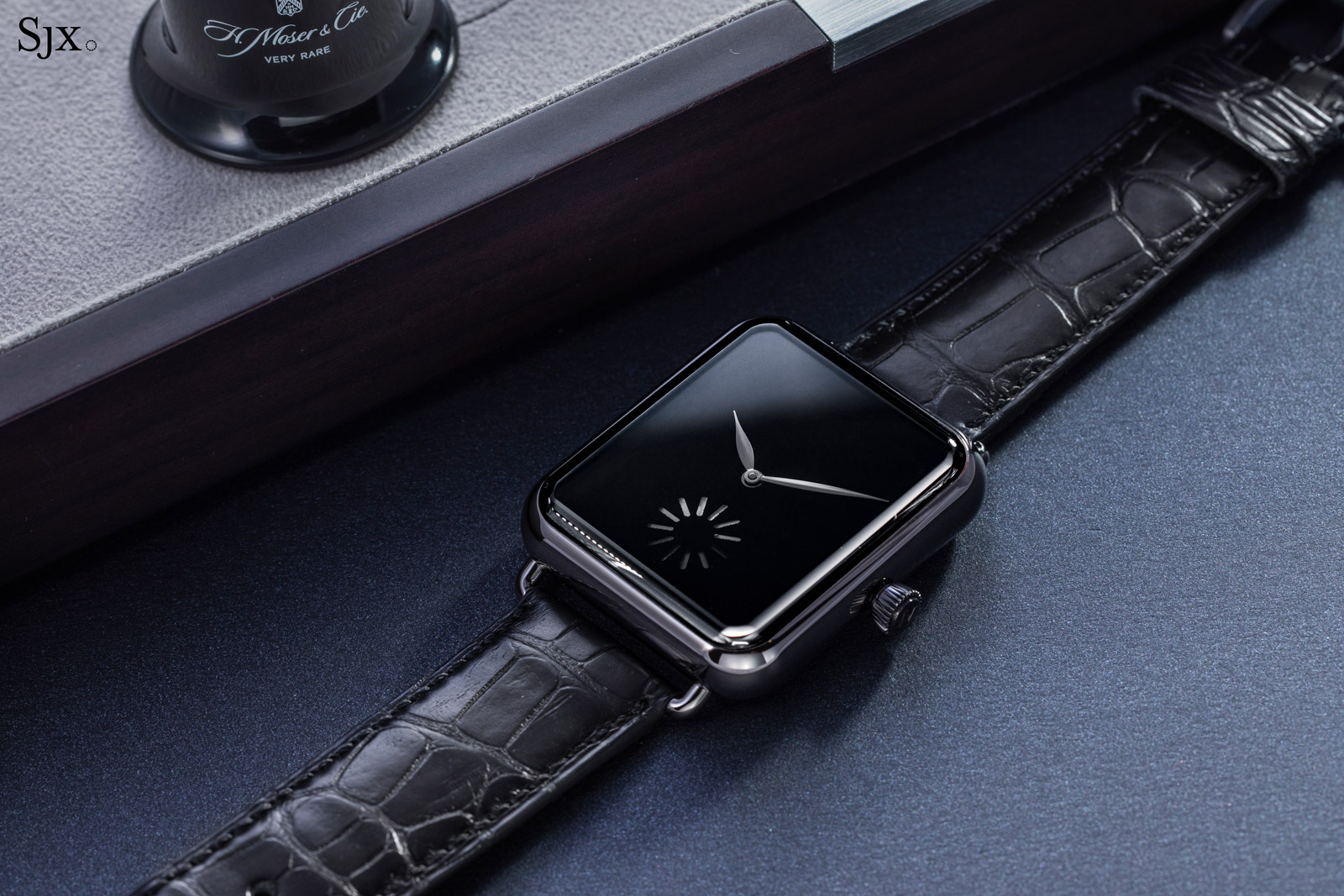
The irreverent Swiss Alp Watch
SJX: Speaking of new products, for a couple of years you did concept watches that were quite funny. But you haven’t done one in some time.
EM: They were not funny. They were, I should say, statements. Some were funny, some were crazy.
The idea is to always to make a statement about something. For example when we did the Genesis, it was quite provocative. It was a high-end, luxury watch and we put a QR code on the on the sapphire crystal – a bold statement.
SJX: But you haven’t done one of these in some time.
EM: Well, we haven’t been to the big fairs [like Watches & Wonders] for some time. Such launches were usually linked to the big fairs. Last year we were not at the fair, so there was no reason for us to do it. We were back [at Watches & Wonders] this year, but we didn’t do it as we didn’t have the right idea.
There were also other things we want to talk about, like Formula 1. You have to be careful not to send too many messages.
Our concept launches were very focused as we didn’t have the budgets to do marketing activations. Now we have a bigger budget so we have to be clear, otherwise it becomes too much noise.
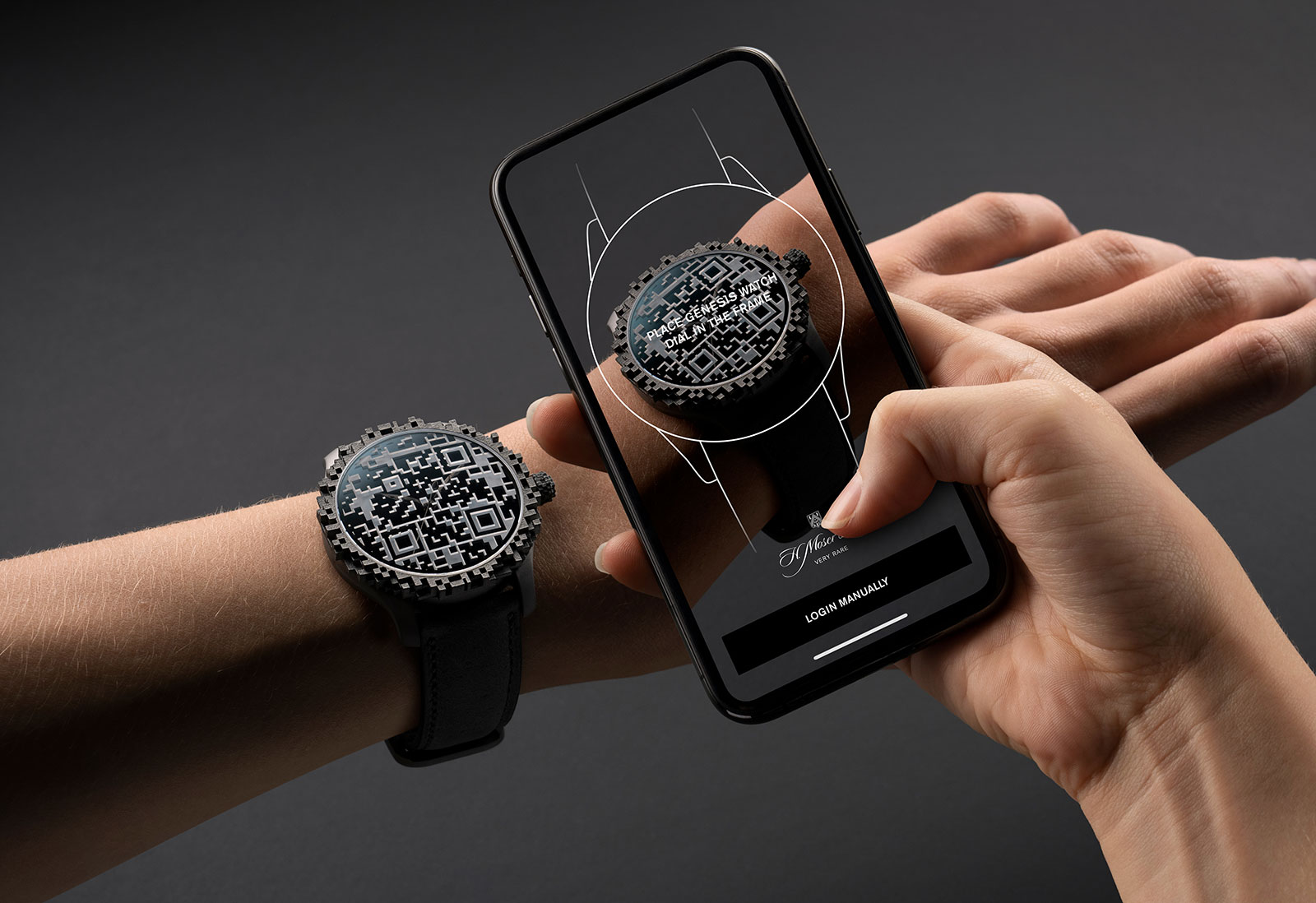
With a QR code for a face, the Endeavour Centre Seconds Genesis. Image – H. Moser & Cie.
SJX: Now you are running two brands. Besides Moser, you have Hautlence. Are there any plans to acquire more brands?
EM: It’s always a question of opportunities. But I think right now it’s the beginning where opportunities are starting to come about.
BM: We are not against the idea. But it needs to be the right brand, where we believe in the project and bring something on the table. It must make sense and complete what we are doing.
EM: Keep in mind that you cannot do the same thing twice, so we don’t want to create another Moser. We don’t want to cannibalise one for another, so it has to be different, or it even similar but we then find a different way to develop it.
We haven’t found one yet. I think the [valuations] are getting better now. Over the last two years, people were asking too much. 2025 will be a better year. And our priority is also more focus on our strategy and supply chain.


